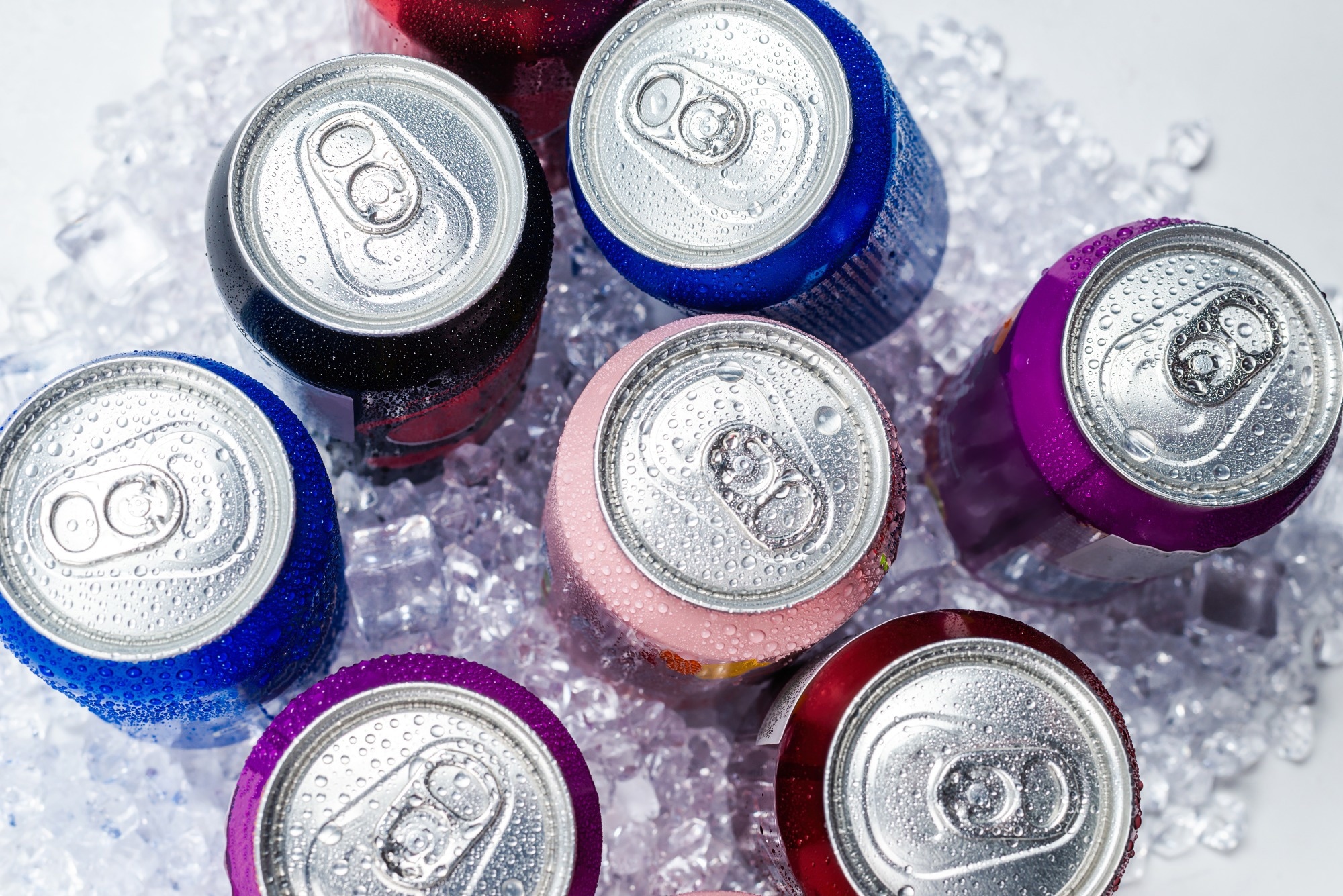A recent study published in Nutrition evaluated university students' consumption patterns of energy drinks (EDs).
 Study: Consumption Patterns of Energy Drinks in University Students: a Systematic Review and Meta-analysis. Image Credit: Holiday.Photo.Top/Shutterstock
Study: Consumption Patterns of Energy Drinks in University Students: a Systematic Review and Meta-analysis. Image Credit: Holiday.Photo.Top/Shutterstock
EDs are promoted to enhance concentration, energy, metabolism, and athletic performance and stimulate mental activity. Caffeine is the chief ingredient of EDs, with 50 – 550 mg per can or bottle. EDs contain more caffeine than the traditional caffeinated beverages and potentially have more active ingredients than other soft drinks.
Acute caffeine consumption increases arterial blood pressure and decreases insulin sensitivity. Chronic caffeine consumption is associated with gastrointestinal, cardiovascular, renal, and central nervous system dysfunction. Athletes can use caffeinated dietary supplements following the removal of caffeine from the banned substances list by the World Anti-Doping Agency.
About the study
In the present systematic review and meta-analysis, researchers assessed ED consumption among university students. PubMed, Web of Science, and Scopus databases were searched for articles using “energy drink,” “consumption,” and “university/college/undergraduate students” as the search terms. Studies were eligible if they reported data on ED consumption among university students, independent of age and gender.
Studies that included individuals other than university students were excluded. Only observational studies were included, and commentaries, editorials, case studies, meta-analyses, reviews, clinical trials, and experimental studies were excluded. Five authors independently screened titles and abstracts of studies.
The Newcastle-Ottawa scale (NOS) was used for quality assessment, and each study was assigned a rating of good, fair, or poor quality. The prevalence of ED use and associated 95% confidence intervals (CIs) were extracted. The heterogeneity of studies was evaluated using the I2 statistic and Cochran’s Q test.
Publication bias was estimated using Egger’s test and funnel plot. Sub-group and meta-regression analyses were conducted to identify the source of expected heterogeneity in meta-analyses. The World Health Organization (WHO) regions, sample size, age, gender, publication year, and the methodological quality of studies were considered for sub-group and meta-regression analysis.
Findings
Of the 502 articles identified from the three databases, 317 were left for subsequent analyses after duplicate removal. Title and abstract screening removed 183 studies, leaving 134 articles for full-text evaluation. Sixty-one articles were removed based on exclusion criteria. Finally, 71 studies were included in the analysis. These studies were conducted in multiple countries and published between 2007 and 2021.
Twenty-seven studies were from the United States (US), eight were from Saudi Arabia, six were from Turkey, and five were from Italy. Twenty-five studies were published in journals without impact factor. All studies included males and females aged 16 to 53; most had large sample sizes and high ethnic variation. The prevalence of ED consumption among subjects varied from 9% to 90% across the selected studies.
The prevalence of ED consumption was higher than 86% in studies from South America, albeit only three studies analyzed it. Twenty-one studies evaluated the prevalence of ED consumption by gender, and 18 reported higher ED use among males. Thirty studies investigated the adverse effects of ED use; participants in more than 20 studies mainly reported sleep disturbances and heart function disorders.
Health-related behaviors associated with the consumption of EDs were analyzed in 35 studies. Alcohol use or abuse, smoking, and physical activity were commonly reported behaviors associated with ED use. Most studies (37) found that ED consumption was for studying and examination. In some studies, the reasons (for ED use) were to stay alert or awake and improve physical activity or sports.
Overall, the prevalence of ED consumption was estimated to be 42.9% among university students, with substantial heterogeneity across studies. Moreover, the overall prevalence of ED use was not different in sensitivity analyses. Meta-regression analysis revealed that the prevalence of ED consumption remained independent of the proportion of females, mean age, or methodological quality.
Besides, ED consumption decreased with increasing sample size. Sub-group analysis according to WHO regions showed the highest prevalence of ED consumption in Southeast Asia region at 62%, followed by the European region (50%), Eastern Mediterranean region (49%), region of Americas (42%), and African region (58%).
Conclusions
The prevalence of ED consumption showed substantial variations across studies. The differences in the estimates of ED use were associated with geographic location and sample size independent of age, gender, and methodological quality.
In summary, university students, particularly males, commonly consume EDs for improved academics and sports or physical activities. Nonetheless, this may lead to adverse health outcomes, particularly those related to sleep and nervous or cardiovascular systems.
Journal reference:
- Protano C, Valeriani F, De Giorgi A, et al. (2022). Consumption Patterns of Energy Drinks in University Students: A Systematic Review and Meta-analysis. Nutrition. doi: 10.1016/j.nut.2022.111904